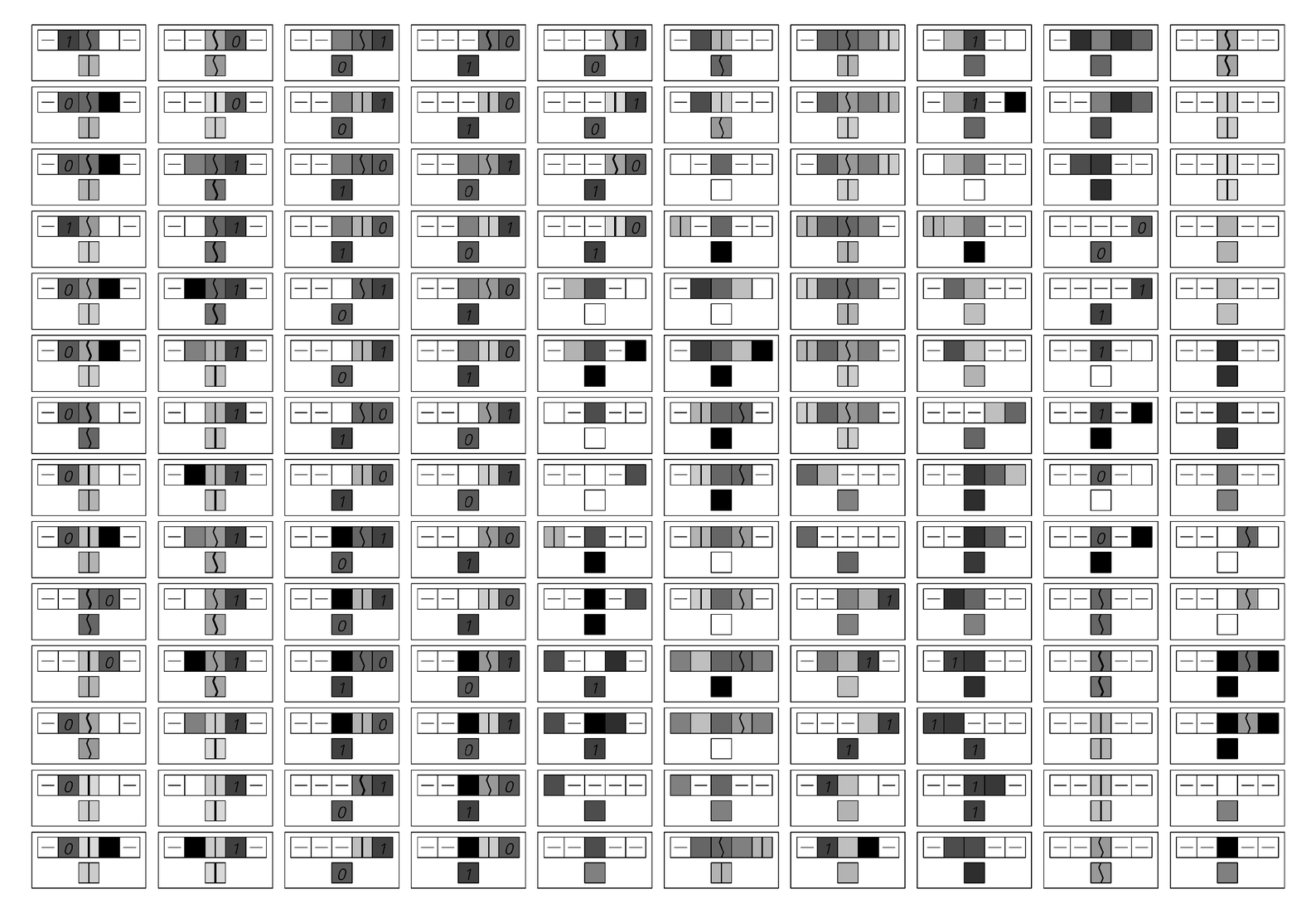On each page the underlying rules for the universal cellular automaton are exactly the same. But on the first page, the initial conditions are set up so as to make the universal cellular automaton emulate rule 254, while on the second page they are set up to make it emulate rule 90, and on the third page rule 30.
The pages that follow [649, 650, 651] show how this works. The basic idea is that a block of 20 cells in the universal cellular automaton is used to represent each single cell in the cellular automaton that is being emulated. And within this block of 20 cells is encoded both a specification of the current color of the cell that is being represented, as well as the rule by which that color is to be updated.

The rules for the universal cellular automaton. There are 19 possible colors for each cell, represented here by 19 different icons. Since the new color of each cell depends on the previous colors of a total of five cells, there are in principle 2,476,099 cases to cover. But by using ![]() to stand for a cell with any possible color, many cases are combined. Note that the cases shown are in a definite order reading down successive columns, with special cases given before more general ones. With the initial conditions used, there are some combinations of cells that can never occur, and these are not covered in the rules shown.
to stand for a cell with any possible color, many cases are combined. Note that the cases shown are in a definite order reading down successive columns, with special cases given before more general ones. With the initial conditions used, there are some combinations of cells that can never occur, and these are not covered in the rules shown.



